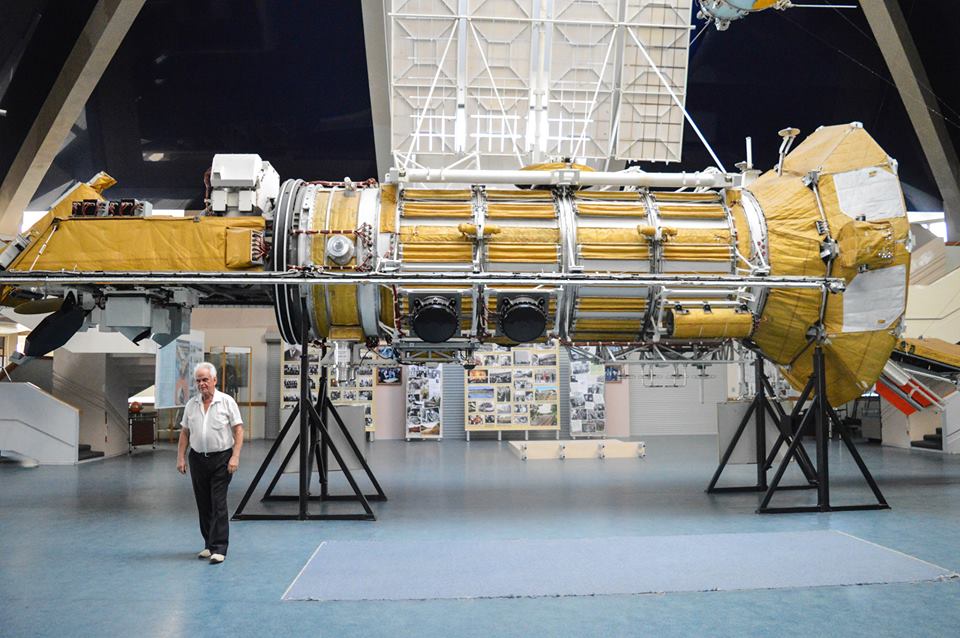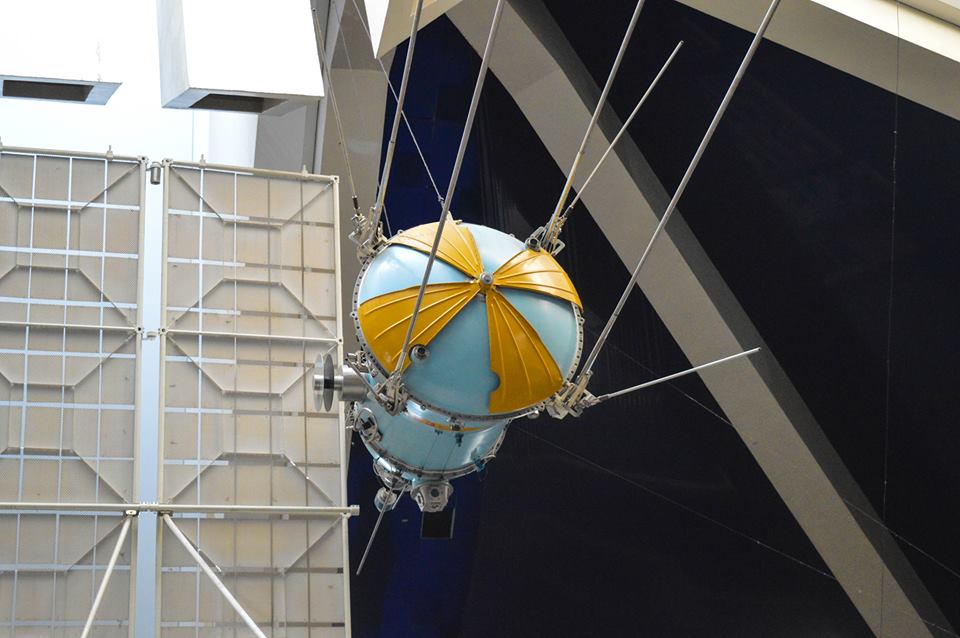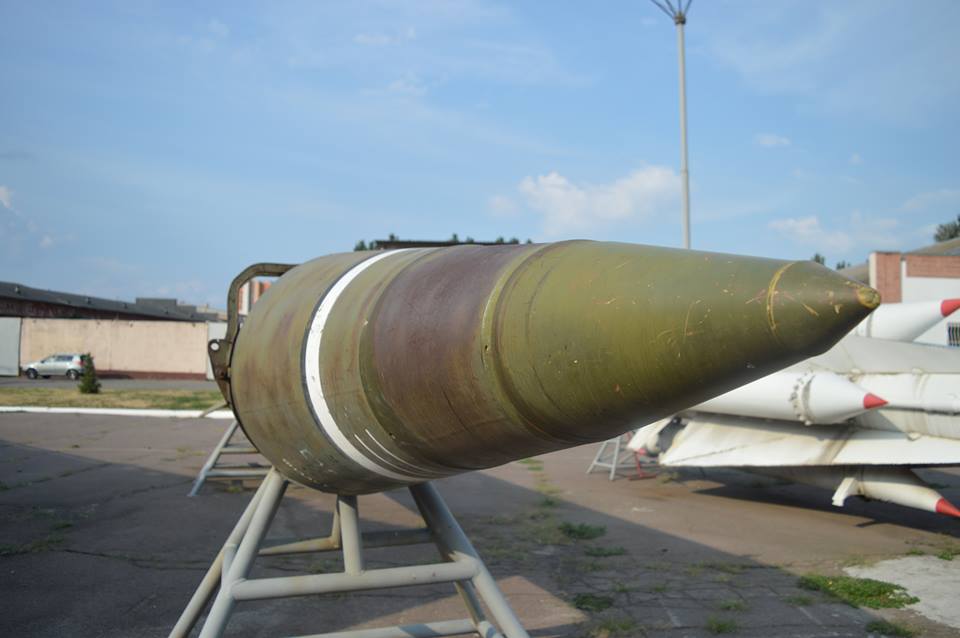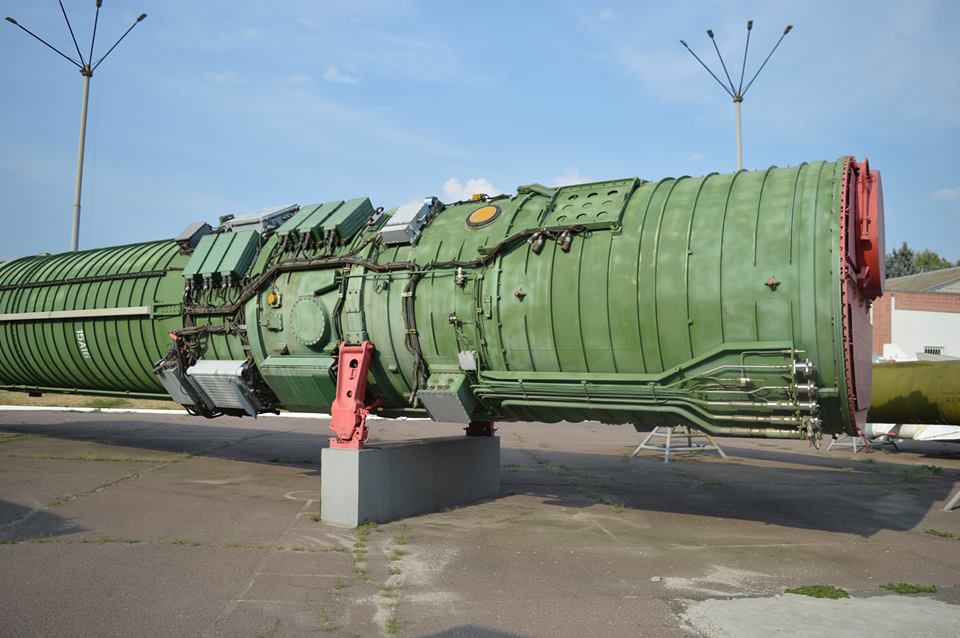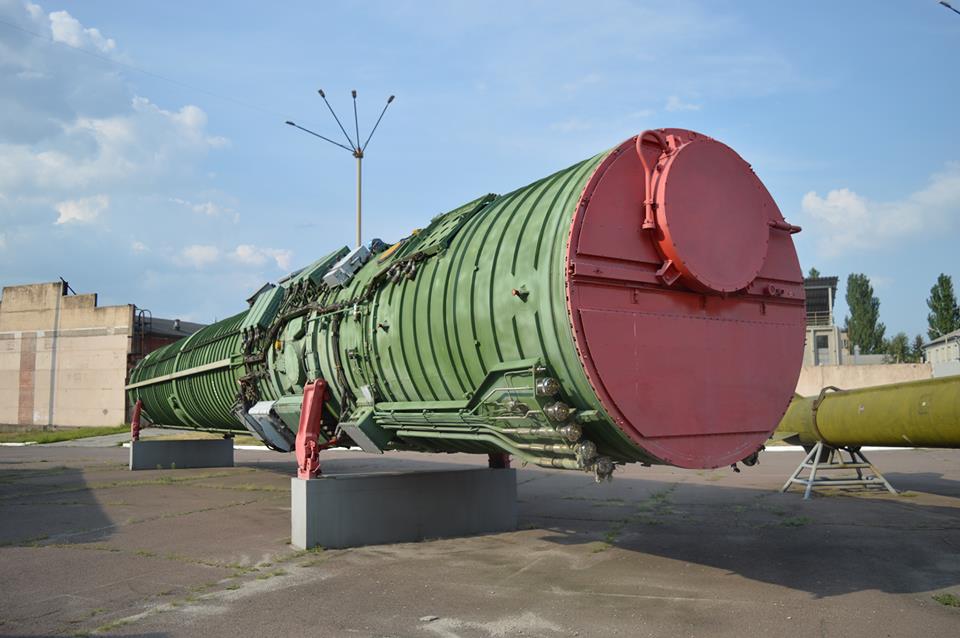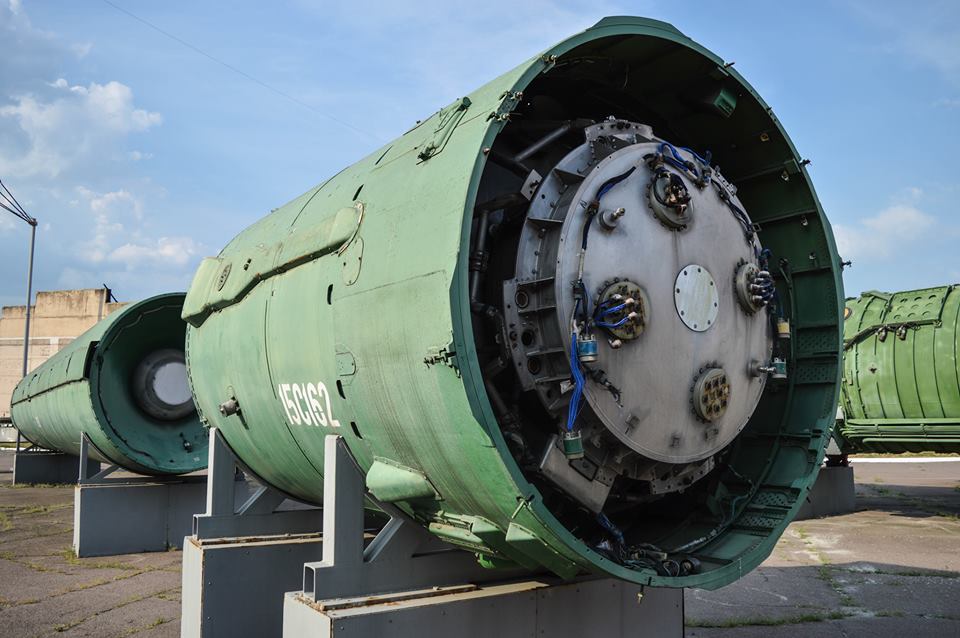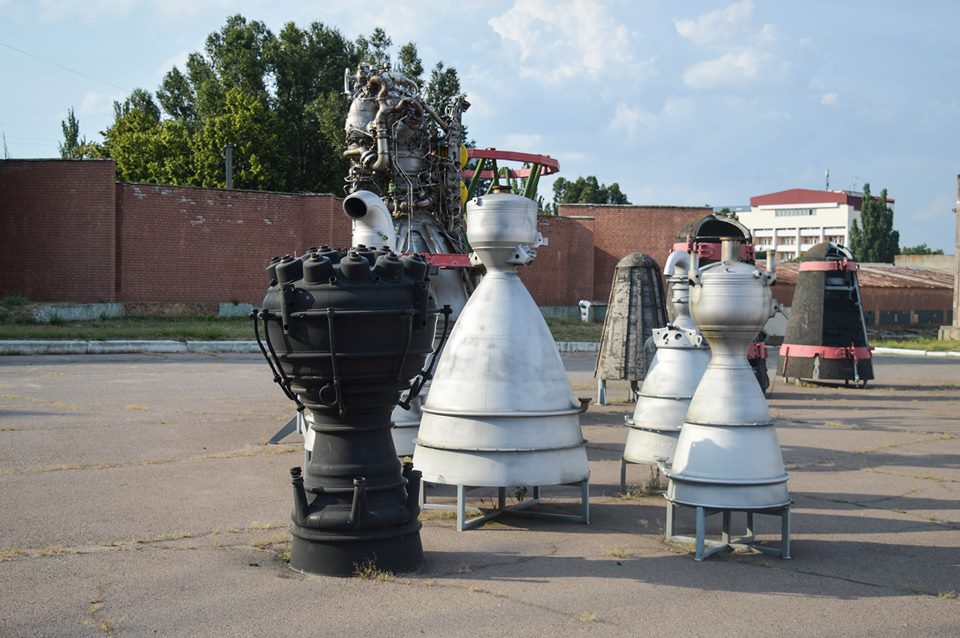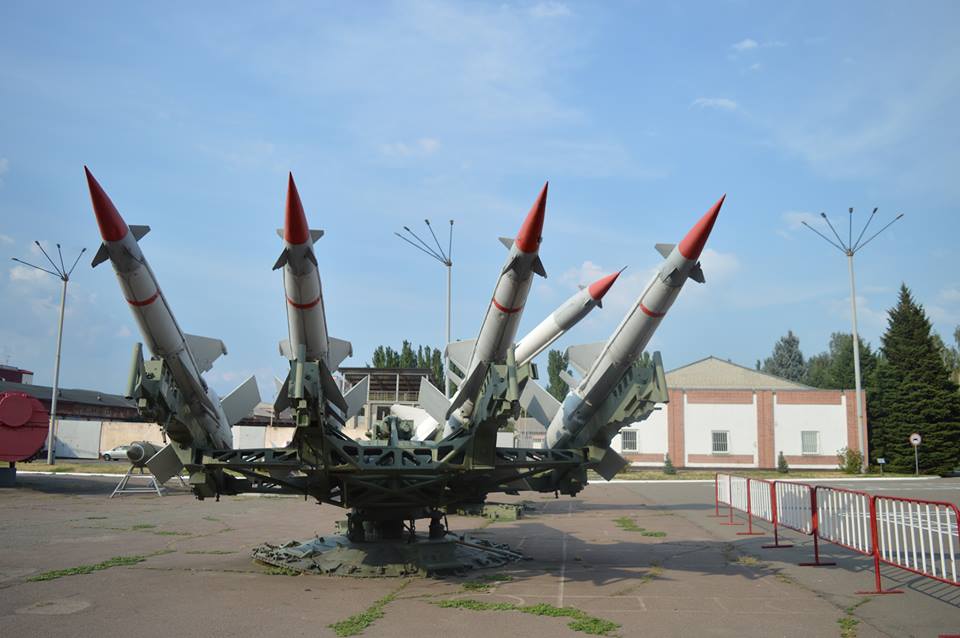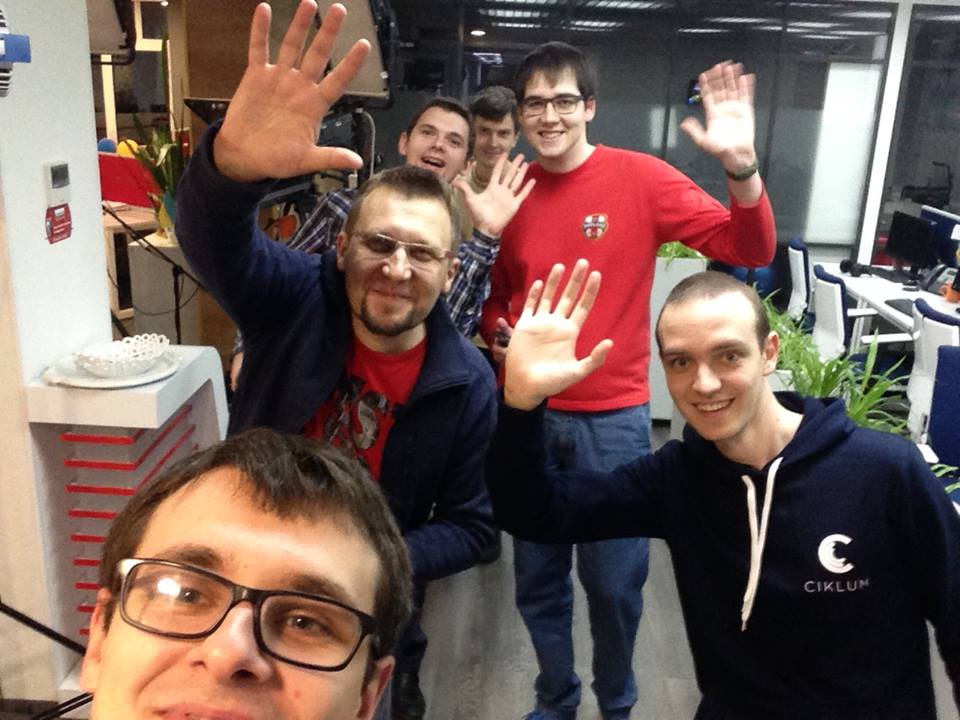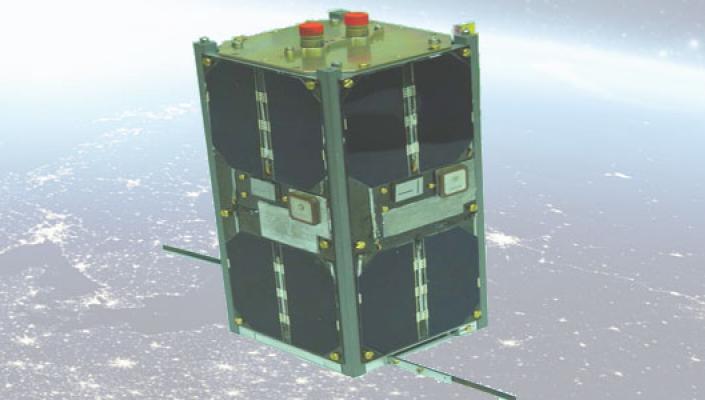The city of Dnipro is located on the banks of the Dnipro river, and seems to be an ordinary large city with a concentration of metallurgical industry. However, the difference from other industrial cities is huge. Dnipro used to be a cluster for rocket production for the entire Soviet Union. The highest quality rockets were produced there and it was Dnipro where the USSR built its scariest intercontinental ballistic missile R-36 (SS-18 “Satan” by NATO classification). After the collapse of the USSR, Ukraine decided to give up its nuclear status and the construction lines for these strategic missiles were shut down. Unfortunately, this large-scale advanced space industrial base, one of the few good inheritances from the Soviet Union, faced significant difficulties in the post-Soviet era.
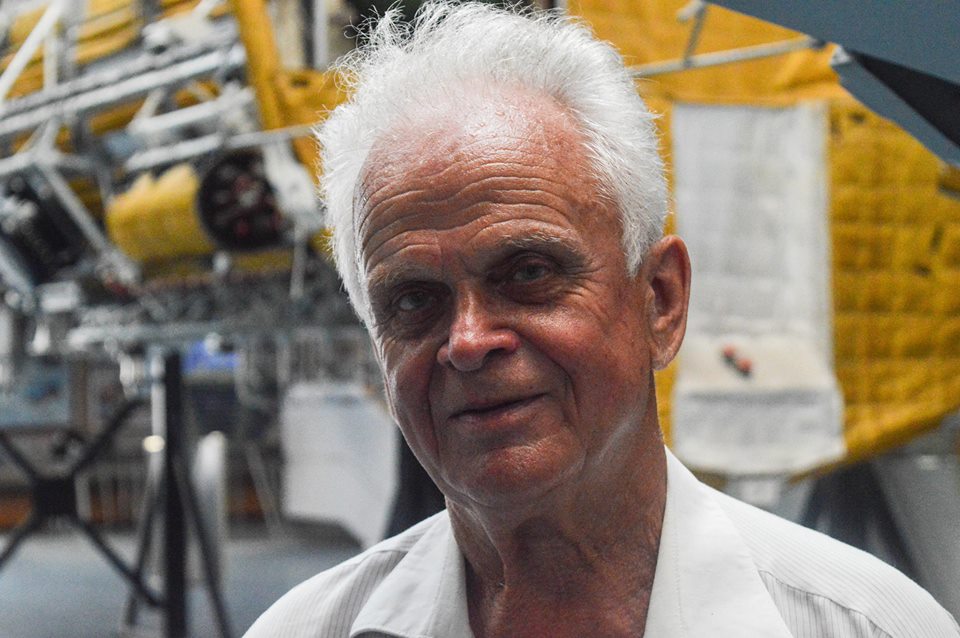
In his youth, Viktor Moysa was a mechanical engineer at Pivdenmash, “Southern Machine-Building Plant named after A.M. Makarov” (also known as Yuzhmash). For about 16 years now, he has tried to keep the memories of the company’s past glory alive by working as a manager at the A.M Makarov National Aerospace Educational Center for Youth. He admires the legendary engineers who used to work here and praises some of their projects. He is skeptical about Ukraine’s decision to give up its nuclear status after the fall of the USSR.
Let’s take a closer look at the heart of Ukraine’s space industry.
How it all started in Dnipro
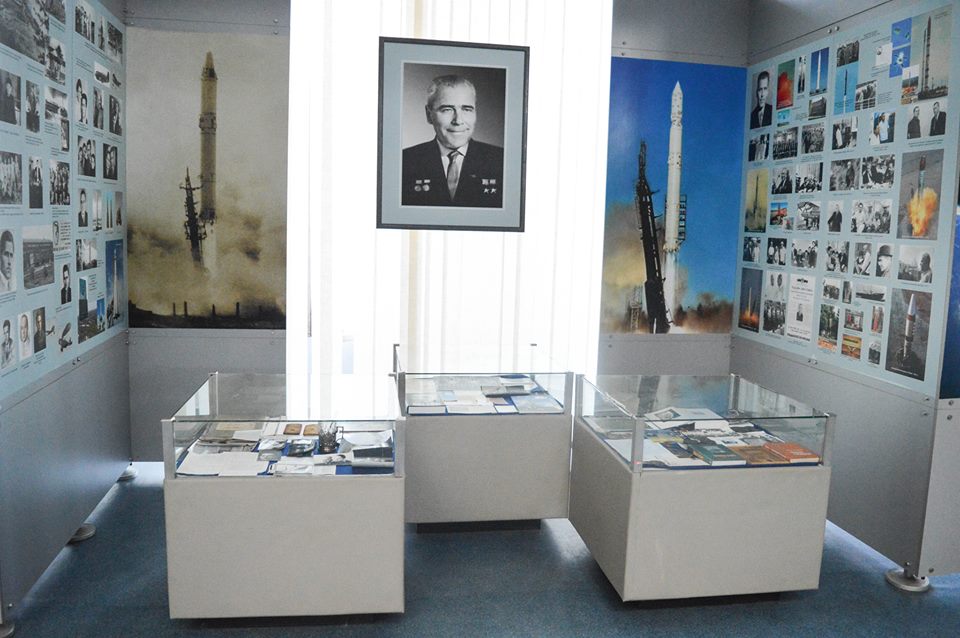
Rocket production was launched in Dnipro on the eve of the Cold War, when the US was actively engaged in developing rocket technology to deliver weapons. But the first rocket, the V2, was created earlier during the WWII, by German aerospace engineer Wernher von Braun. After WWII, the US captured him along with about 700 other German rocket designers and offered them jobs. As the Soviet Union had few of its own specialists in the field of rocketry, for about 2 years it explored the German experience in ballistic missile design. After that, a new goal was set for the Soviet Union’s rocket scientists – to re-create the V2 design using only Soviet-made materials. This goal was reached in 1948, under the leadership of the rocket engineer Serhiy Korolev, by a small experimental factory in Dnipro. The next goal was to create rockets which could reach the US. Even though Korolev’s design didn’t reach this goal, the Soviet military decided to use the missile anyway. However, at that time, the Dnipro-based facility was only a small experimental factory with a small capacity. In 1951, a new larger factory was built in Dnipro, in the huge premises of a former automobile factory. A special government commission had searched for the best location in the whole Soviet Union. It chose Dnipro for the following reasons:
- At that time, the population of Dnipro was relatively small (just over a half a million people), which meant it could easily be closed to foreigners. (The city remained closed until the end of the 1980’s.)
- The city is located on the banks of a big river, thus making transporting large rockets easier by water.
- 5 technical universities were already located in the city and provided a plentiful supply of engineers.
- And last, but not least, the city had an enormous metallurgical industrial base. After the liberation from the Nazis in 1943, it became a large center of metallurgy in the southern USSR.
The automobile factory was built in 1944, while WWII was still going on, but moved to Naberezhnye Chelny, nowadays Russia, in 1951, where it is now known as the “KAMAZ” company. The remaining facility in Dnipro was subordinated to the Ministry of Defense and tasked to manufacture state-of-the-art missiles.
Formidable “Satan” missile – produced in Dnipro

While the city, with its factory and its design office, was an active participant in one of the most dangerous periods of world history – the Cold War, being involved in the design and production of military missiles gave a huge boost to the development of Dnipro’s space industry.
By 1954, the missiles produced in Dnipro did not meet the requirements of the military, because of their limited active duty duration. So, the Soviet government decided that Serhiy Korolev’s design bureau would focus on space activities, while another entity will be created for the military needs. Mykhailo Yangel was appointed its chief designer. His company delivered a new missile design with advanced characteristics in 1957. And in 1959, the company started producing the Soviet Union’s first strategic intercontinental ballistic missiles.
The arms race was in its height. The Soviet Union continued to perfect its proven 15A14 (R-36M) missile design in Dnipro over the course of 20 years. By its end, the missile was able to deliver multiple warheads. It was also equipped with sophisticated decoys, such as a cloud of metal needles, which render enemy radars useless.
The missile was given the name “Satan” by NATO. Until recently, it was one of the threatening missiles in the world. It is still an important part of the Russian strategic missile forces. [Although now, due to the Russo-Ukrainian war after the Russian occupation of Crimea and the eastern Donbas, the maintenance of Ukrainian-produced components for the missiles by Pivdenmash has been stopped and the Russian Ministry of Defense has not been able to find a solution so far. – Editor]
Ukraine’s space industry was born in Dnipro
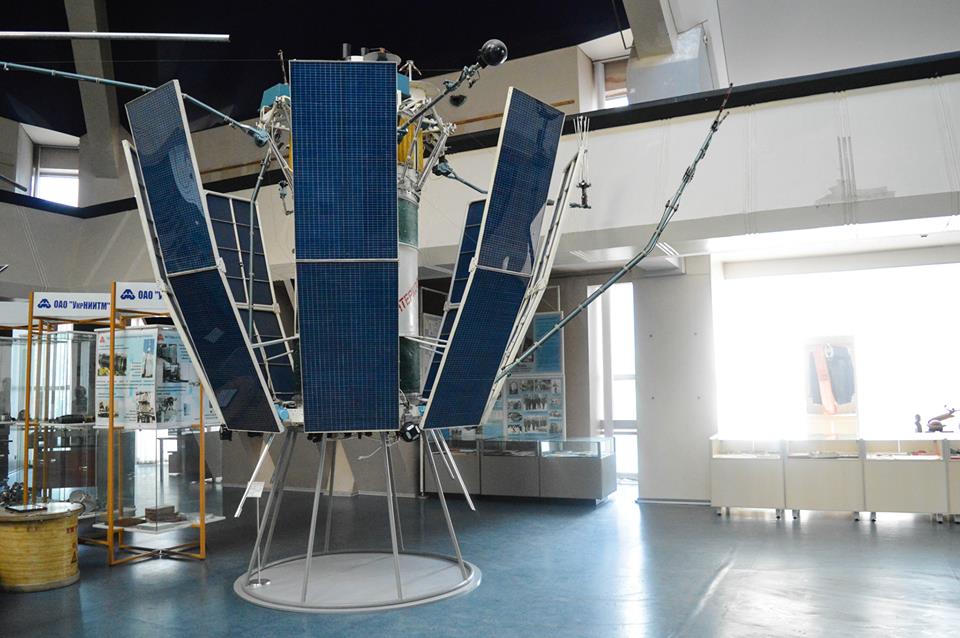
While the new design bureau was dealing with military missiles that delivered warheads, Korolev continued to work on space applications for rocket technology. He launched the first satellite around the Earth (the famous Sputnik) and also wanted to send a human to space. He did it under constant pressure from the government, which pushed him to accelerate his work to make the Soviet Union come first in the space race. As a result, in 1961, Yuriy Gagarin became the first man in space. The next challenge for Korolev and his small experimental factory was delivering space technology for exploring the near-Earth space.
He asked for support from Mykhailo Yangel, whose enterprise that was funded by the military, had much bigger capabilities. In 1958, a new mission – space exploration – was the became the focus of Dnipro’s largest aerospace company. And in 1962, it sent its first Earth satellite into orbit.
The satellite design has some shortcomings, but fixing them required more investment than the USSR could provide. So, Yangel suggested getting the investment money abroad. The Soviet authorities considered this a very impudent request. But months later, after rethinking his request, the government decided to accommodate this approach via the Soviet Academy of Sciences.
There Yangel opened the first international space program in the world, which was named Interkosmos. The countries of the Warsaw Pact, other socialist countries, Syria, India and France joined the program. Interkosmos designed more than three hundred Earth satellites and sent them into space. All of them were built at the Dnipro factory.
When the Soviet military realized the range of capabilities of some of these satellites, they asked for new designs capable of remote sensing the Earth’s surface. This led to Soviet reconnaissance satellites that could reveal locations of enemy rockets. To counter this Soviet capability the United States had to build more rockets and mask them more carefully.
According to Viktor Moysa, the historian of the Dnipro space industry, the company has launched more than 1100 satellites into space and 400 of them were designed in Dnipro. All the satellites were sent into space by launch rockets that were also made in Dnipro. They were developed using the military missile design as its base. It enabled the conversion of some military rockets to peaceful aims.
Viktor explained how it was done: “If military rockets were already located in a launch area, we removed assembled military stages and installed additional upper stages and satellites…”
Because of this conversion of old military equipment, launching satellites became much cheaper. These launches cost the Soviet Union ten times less than the original price. Such inexpensive launches led to a situation where Dnipro was entrusted with the whole program of near-Earth space exploration, as well as the program for monitoring the Earth and part of the solar exploration program.
The pride of the company: Zenit and Antares
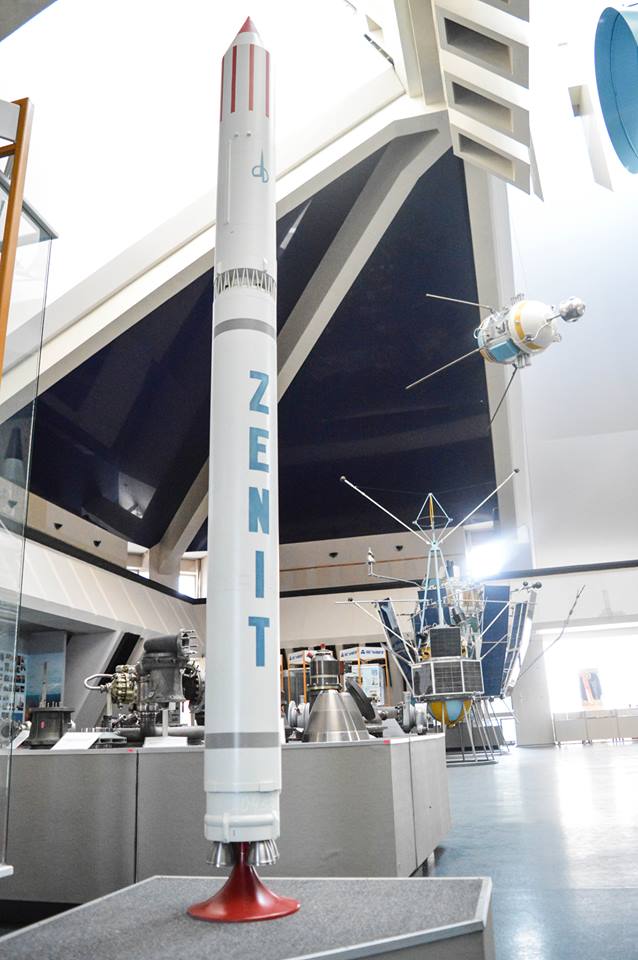
In 1982, the engineers faced a bigger challenge – launching a satellite which weighed 6.5 metric tonnes. This was impossible to achieve with old military rockets, while it was not permitted to use the Satan missile for a non-military purpose. So, for the first time in Dnipro’s history, the Soviet leadership decided to develop an entirely peaceful and ecologically-friendly space launch vehicle. It was named Zenit (“Zenith” in English).
Ten years after its creation, a consortium of four companies from Norway, Russia, Ukraine and the United States, managed by Boeing, decided to start the program of the Sea Launch.
Zenit exceeded all expectations. Its designers proposed that the preparation of the rocket to a launch in the conditions of the Pacific Ocean Offshore Waters will be done automatically without human involvement, and the preparations would take only 3-4 hours. To compare, a competitive bid from the US specified 200 people and 3-7 days. Zenit won.
Since then, 36 launches were made from the Sea Platform. The last launch took place in 2014.
Despite the fact that during the last 30 years Zenit has been the best launch vehicle in its class, which is in demand on the international market, Viktor suggests that its 2014 launch could have been the last one:
“The rocket was made by Ukraine together with Russia. We know the relationships between the two countries during the last 2 years. Ukraine cannot make this rocket without Russia. And Russia cannot make it without Ukraine. Around 2,000 enterprises took part in constructing it. More than 70% are placed in the Russian Federation. To use new components, a new design is needed, and new tests. Ukraine has no money for that. And Russia also does not have it, by the way.”
When the US renewed its program for a launch vehicle to visit the International Space Station, it started the project Antares. The Pivdenne Design Bureau was chosen to design and manufacture of the first stage of the vehicle. Since 2013, 6 launches with the first stage of Ukrainian rocket have already taken place.
In 2016, the Pivdenne Design Bureau had orders for six new Antares stages. Unfortunately, these were the only space-related orders the bureau won in 2016.
“We do not have other orders. With the ability to make a hundred of rockets per year, we make six. How do we cope? Before the Soviet Union’s collapse, 52,000 people used to work there. Now there are only 5,000,” explains Viktor.
Can Ukraine stay in the rocket science business?
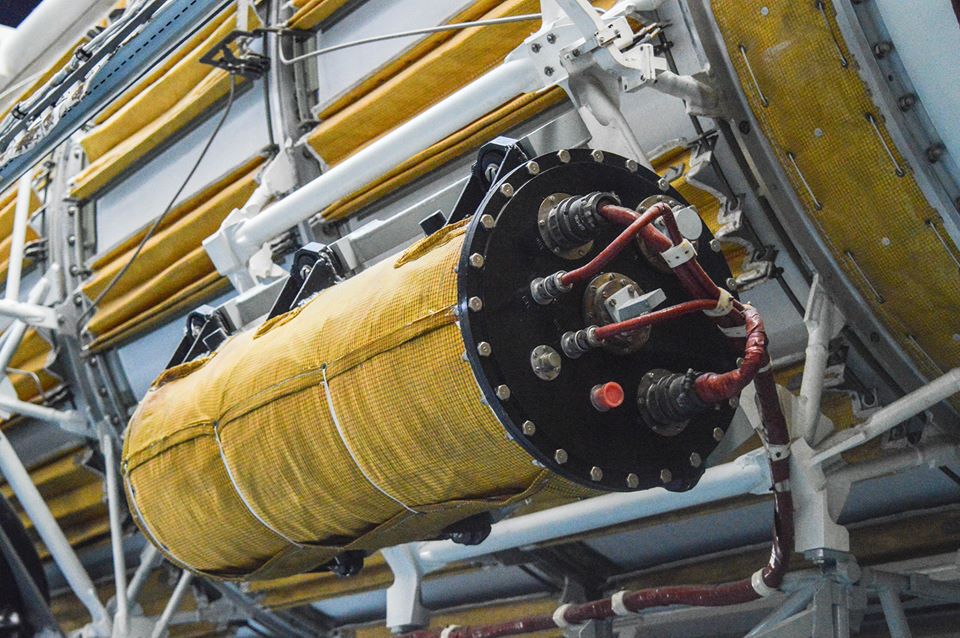
The construction of the military rockets in Dnipro became history since Ukraine signed the Budapest Memorandum and became a country free from nuclear weapons in 1994. However, according to Oleksiy Kulik, the Deputy General Director for Science and Education of the Ukrainian Youth National Aerospace Education Center, Pivdenmash can construct other kinds of weapons:
“Pivdenmash can produce small operational-tactical missile systems which are needed for our country to protect itself from external aggressors. It can produce small arms, artillery, grenade launcher systems. However, I am talking about weapons, which Ukraine needs for its defense.”

Talking about the space market, Ukraine’s plans are ambitious – to stay among the world’s leaders of the rocket and space industry and to take part in Moon exploration programs. One of its aims is to create its own group of spacecraft for the needs of the country. According to Olekisiy Kulik, there are some problems with this:
“Despite Ukraine being a space-faring nation, in fact, it has none of its own satellites, because of the cooperation between between Ukraine, Russia, and Belarus, which remained after the Soviet Union’s collapse. It was working efficiently until the last events. Ukraine could not have its own spacecraft, but could take part in their development. Today, the vector of partnerships changed dramatically, the question of creation our own independent satellite systems became very relevant.”
Another part of the problem, according to the expert, is that Ukrainian space programs did not intend to develop entire satellite systems. As there were no orders from the state, there was no financing for that and, thus, challenges were left unaddressed.
“Today no country can implement large-scale projects alone. It’s relevant when talking about the International Space Station, the Sea Launch and Antares. Until recently, the US had used Russian engines in its launch rockets. There was similar situation in Ukraine. Now Russia has the world’s monopoly on the engines. Only China, India, South Korea and Japan make their own ones. However, because of the number of specifications, they do not meet requirements for Ukrainian launch vehicles,” says the expert.
According to him, the solution for Ukraine can be only producing its own engines, giving the country independence from Russia in this area.
In any case, Ukraine is a part of the global space industry market. And today the market is changing. Before it was represented by state monopolies, but now private enterprises have taken leadership.
“Two years ago there was about 80% underfunding from the state. However, we can’t put all the blame on the state – because of events in Donbas, investors do not want to come here. However, the absence of state orders stimulated the development of marketing services for space enterprises. These services started to look for orders all over the world. Now is the period of order formation. Also, we observe resistance from some key players, which do not want Ukraine to enter the international market with its technologies,” explained Kulik.
Oleksiy Kulik also teaches students at a university and says that many of them chose space-related majors not because they want to work in the field after graduation, but because they realize that knowledge of aerospace engineering will open doors for them in any engineering job:
“Any self-respecting state seeks technological advancement. And there is no technology higher than rocket and space industry. Neither IT, nor computers. Ukraine received such a unique gift. If we do not maintain it, then we are not worth even a penny. Then indeed we become an agrarian country and nothing else.”
According to the most recent report, in 2016, Pivdenmash had to overcome the peak of the crisis of production caused by the break of its established supply chain with Russia. In 2017, it is expected that the utilization of its manufacturing capacity will be doubled.

